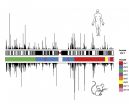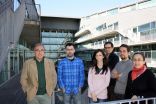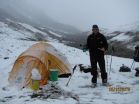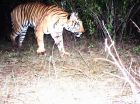(Press-News.org) This news release is available in Spanish.
A group of international researchers has just discovered the keys to explaining why certain processes and systems in mice, like the immune system, metabolism and stress response, are so different to those in humans. The scientists have detailed the functional parts of the mouse genome and have compared them with those in humans. A whole set of data has come out of this - which is now to available to the scientific community - which will be significant for research into mammalian biology as well as the study of human illness mechanisms.
The comparison focuses on the genetic and biochemical processes regulating genome activity in humans and mice. The scientists have found that, in general, the systems for controlling genome activity in the two species are very alike, and have been preserved through time. However, they have also detected certain differences in the DNA, and patterns of gene expression that are not shared. "Finding these similarities and studying the aspects of mouse biology that may reflect human biology, allows us to approach the study of human illnesses in a better way", affirms Bing Ren, one of the principal authors from the ENCODE Consortium and a lecturer in molecular and cellular medicine at the University of California - San Diego.
"The mouse is one of the most utilised models for studying human biology and we use it for creating models of human illnesses and testing new drugs and therapies. Our study goes a long way towards validating the usefulness of this animal model and provides enormous support for its use in human illnesses. We have found that there are many well-preserved cell processes in the two species, for example, in embryonic development. Understanding these similarities will allow us to carry out more accurate studies on human biology", explains Roderic Guigó, one of the main researchers involved in the work and coordinator of the Bioinformatics and Genomics programme at the CRG.
The researchers have compared various processes involved in gene expression, such as gene transcription and chromatin modification, and have repeated this in different tissues and cell types from both humans and mice. "Our lab took part in analysing the group of RNA or transcriptome, that results from transcription, the process by which the instructions in the genes are read. We have discovered that human and mice transcriptome contains both preserved and divergent elements. Surprisingly we have found that the differences seem bigger between species rather than between fabrics when initially we thought that the gene activity in the same kinds of tissues would be similar", adds Alessandra Breschi, one of the first co-authors of the main work published in Nature and a researcher in Roderic Guigó's lab at the CRG.
The project makes it clear that there is a wide variety of options available for achieving gene expression. By comparing these two genomes they have also found that there is a common "language" that the cells use at the molecular level but which, at the same time, is tremendously flexible and has varied greatly throughout evolution. For example, if we used the analogy of electrical circuits, we would find cables, plugs, switches, etc. By combining the pieces in one way or another, we would obtain very different circuits (as happens between mice and humans) although the basic mechanisms governing the operation are based on the same methods and available resources.
An additional study, currently available at bioRxiv, led by the researchers from the CRG and Cold Spring Harbour Laboratory, highlights the fact that a substantial part of human and mice genes have maintained an essentially constant expression throughout evolution, in tissues and various organs. In addition, the researchers have quantified the preservation level of this gene expression between humans and mice. This allows the identification of those genes that have the same expression in the two species, and for which the mouse represents a good model of human biology.
"ENCODE is a living project and the maps that are generated are constantly updated and improved, with information being added on new types of cells and tissues or new complementary genome assays. We hope that the project can keep providing this data as it has up to now, making it available to everyone and treating it in a systematic and coherent way", concludes Dr. Guigó, the only principal investigator in Europe involved in this work.
The results of the comparison will be published on November 19 in four articles in the prestigious journal Nature. As well as this, other scientific journals including Genome Research, Genome Biology, PNAS, Blood and Nature Communications are also bringing out related articles. The ENCODE Consortium, or ENCyclopedia of DNA Elements, is a research programme on the human genome funded by the US National Institutes of Health.
INFORMATION:
Washington, DC--The Endocrine Society today issued a Clinical Practice Guideline (CPG) for the diagnosis and treatment of Paget's disease of the bone, a condition where one or more bones in the body become oversized and weak.
The CPG, entitled "Paget's Disease of Bone: An Endocrine Society Clinical Practice Guideline," will appear in the December 2014 issue of the Journal of Clinical Endocrinology and Metabolism (JCEM), a publication of the Endocrine Society.
As part of its normal processes, the body breaks down old bone tissue and replaces it with new bone. When someone ...
CINCINNATI - Conclusive data show that hydroxyurea therapy offers safe and effective disease management of sickle cell anemia (SCA) and reduces the risk of stroke, prompting early termination by the National Heart Lung and Blood Institute (NHLBI) of a key clinical trial studying the drug's efficacy.
NHLBI officials issued the announcement today, about one year before the study was originally scheduled to end. Going by the title TWiTCH (TCD With Transfusions Changing to Hydroxyurea), the Phase III randomized clinical trial at 25 medical centers in the U.S. and Canada compared ...
CHAMPAIGN, Ill. -- Youth who enter puberty ahead of their peers are at heightened risk of depression, although the disease develops differently in girls than in boys, a new study suggests.
Early maturation triggers an array of psychological, social-behavioral and interpersonal difficulties that predict elevated levels of depression in boys and girls several years later, according to research by led by psychology professor Karen D. Rudolph at the University of Illinois.
Rudolph and her colleagues measured pubertal timing and tracked levels of depression among more than ...
The intense farming practices of the "Green Revolution" are powerful enough to alter Earth's atmosphere at an ever-increasing rate, boosting the seasonal amplitude in atmospheric carbon dioxide to about 15 percent during the last five decades.
That's the key finding of a new atmospheric model that estimates that on average, the amplitude of the seasonal oscillation of carbon dioxide in the atmosphere is increasing at the rate of 0.3 percent every year.
A report on the results of the model, called VEGAS, is published today in the journal Nature.
"What we are seeing ...
Each year in the Northern Hemisphere, levels of atmospheric carbon dioxide drop in the summer as plants "inhale," then climb again as they exhale after the growing season.
During the last 50 years, the size of this seasonal swing has increased by as much as half, for reasons that aren't fully understood.
Now a team of researchers has shown that agricultural production may generate up to a quarter of the increase in this seasonal carbon cycle, with corn playing a leading role.
"This study shows the power of modeling and data mining in addressing potential sources ...
The U.S. Department of Health and Human Services today issued a Notice of Proposed Rulemaking (NPRM), which proposes regulations to implement reporting requirements for clinical trials that are subject to Title VIII of the Food and Drug Administration Amendments Act of 2007 (FDAAA). The proposed rule clarifies requirements to clinical researchers for registering clinical trials and submitting summary trial results information to ClinicalTrials.gov, a publicly accessible database operated by the National Library of Medicine, part of the National Institutes of Health. A ...
Geologists in Syracuse University's College of Arts and Sciences have recently figured out what has caused the Alaska Range to form the way it has and why the range boasts such an enigmatic topographic signature. The narrow mountain range is home to some of the world's most dramatic topography, including 20,320-foot Mount McKinley, North America's highest mountain.
Professor Paul Fitzgerald and a team of students and fellow scientists have been studying the Alaska Range along the Denali fault. They think they know why the fault is located where it is and what accounts ...
It's hard to believe, but there are similarities between bean sprouts and human cancer.
In bean sprouts, a collection of amino acids known as a protein complex allows them to grow longer in the darkness than in the light. In humans, a similar protein complex called CSN and its subunit CSN6 is now believed to be a cancer-causing gene that impacts activity of another gene (Myc) tied to tumor growth.
Somehow the same mechanisms that result in bigger bean sprouts, also cause cancer metastasis and tumor development.
A study at The University of Texas MD Anderson Cancer ...
Human-wildlife conflict resolution near protected areas critical for tiger survival
Stripe-matching software and individual histories inform decisions on handling conflict-prone big cats
NEW YORK (November 18, 2014)--Researchers with the Wildlife Conservation Society and other partners in India are using high-tech solutions to zero in on individual tigers in conflict and relocate them out of harm's way for the benefit of both tigers and people.
In recent tiger-conflict cases involving both a human fatality and the predation of livestock, both occurring near two of ...
Nearly 30,000 people become living kidney donors worldwide each year, and many are young women. Researchers at the Institute for Clinical Evaluative Sciences (ICES), Lawson Health Research Institute and Western University set out to determine if being a living donor has any effect on future pregnancies.
The study, published in the New England Journal of Medicine, found living kidney donors were more likely to be diagnosed with gestational hypertension (high blood pressure) or preeclampsia than non-donors.
Preeclampsia is a pregnancy complication characterized by high ...





